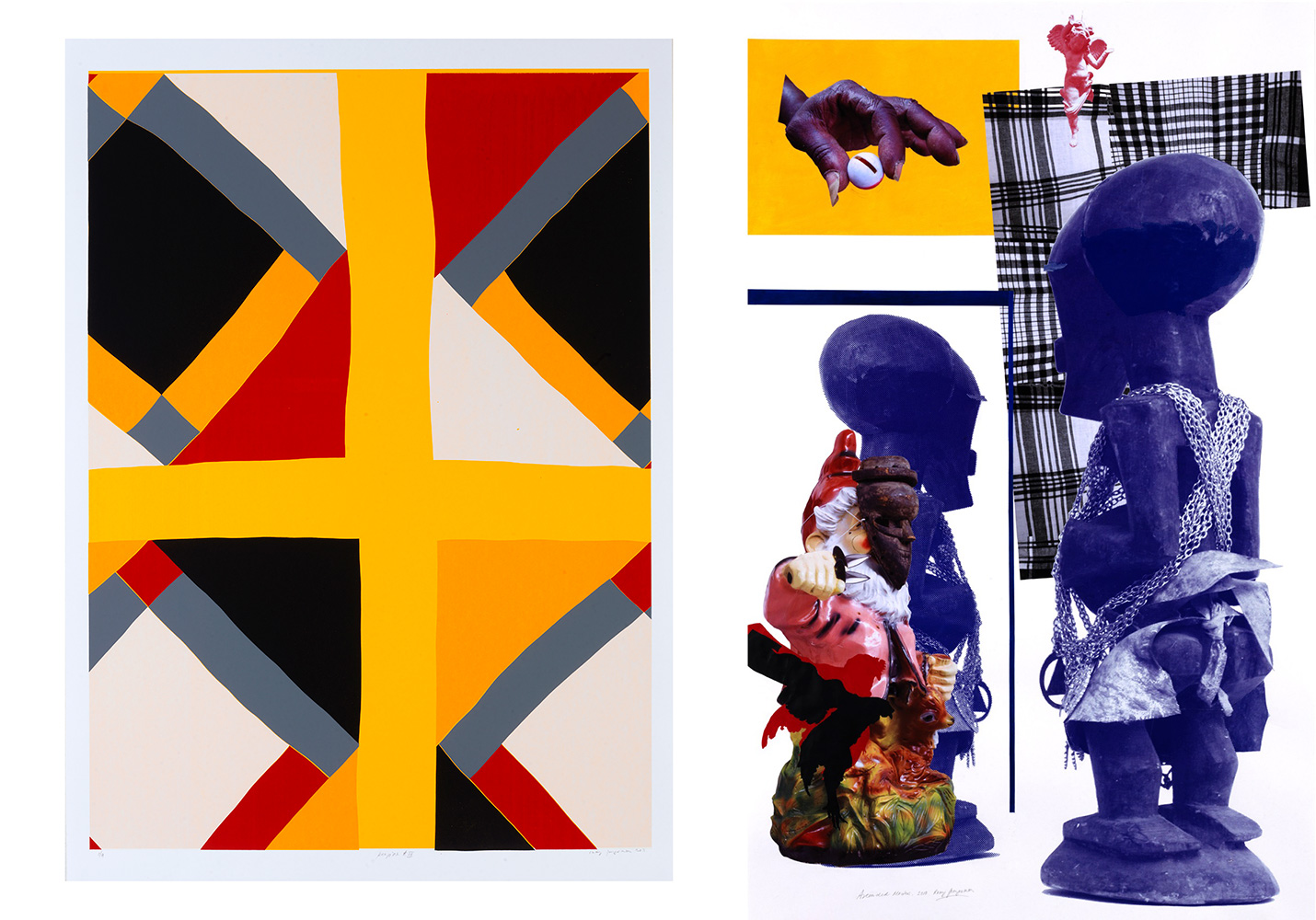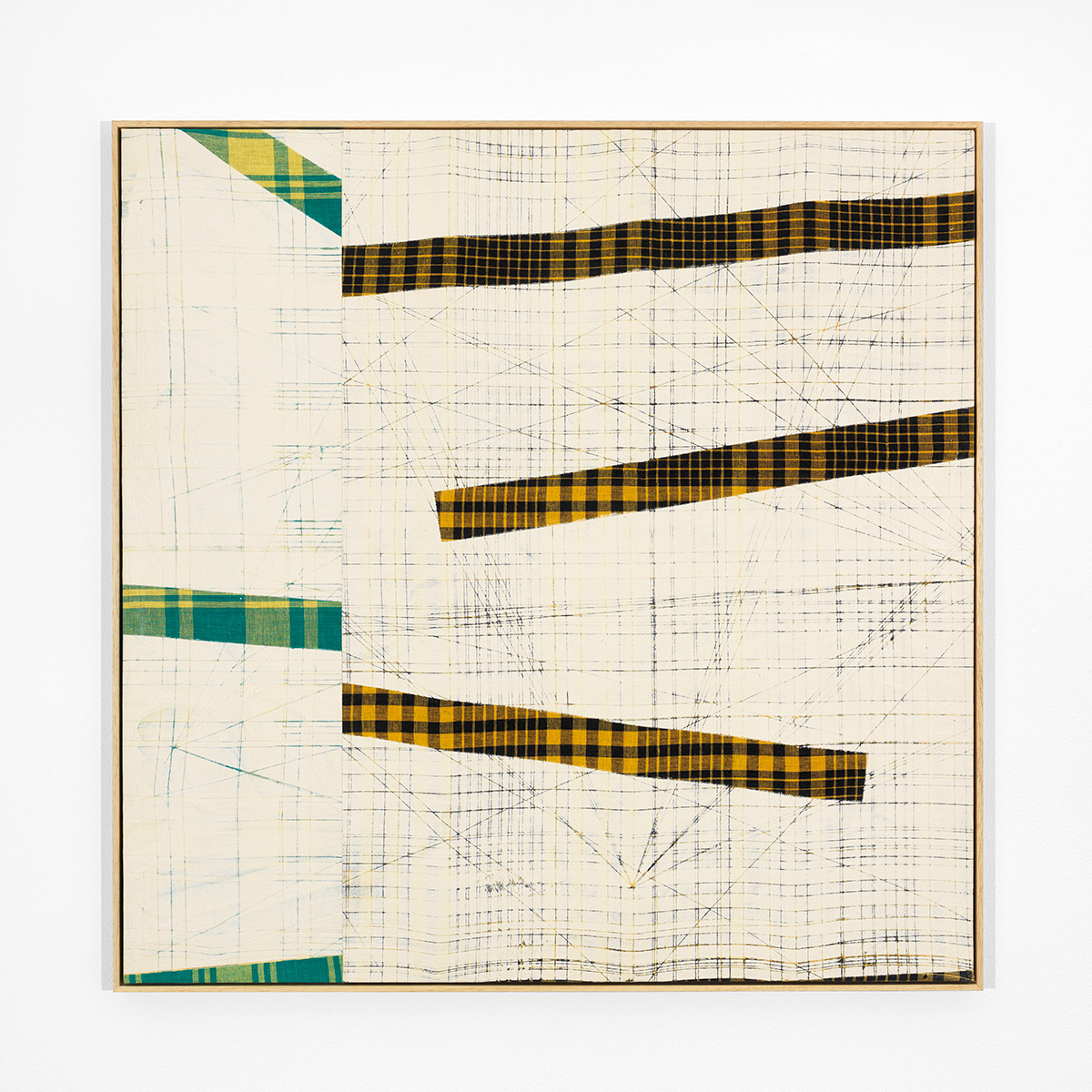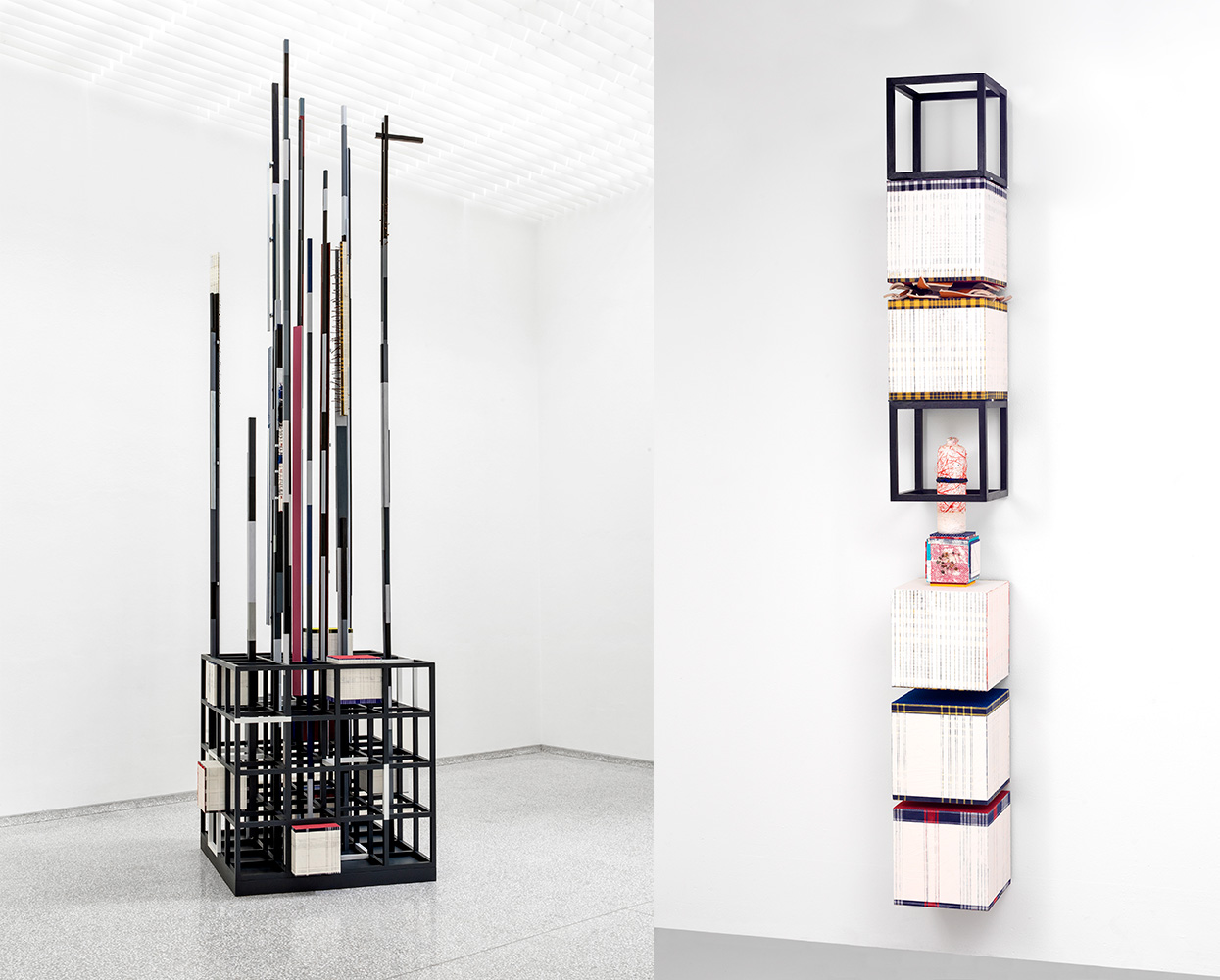PREVIEW: Remy Jungerman-Behind the Forest
 In his work, Remy Jungerman explores the intersection of pattern and symbol in Surinamese Maroon culture, the larger African Diaspora, and 20th Century “Modernism.” In bringing seemingly disparate visual languages into conversation, Jungerman’s work challenges the established art historical canon. Jungerman’s work leaps boldly and adroitly into the epistemological gap between culturally confident Maroon self-knowledge and the Dutch learning curve around all things Jungerman, Afropean and Eurocentric.
In his work, Remy Jungerman explores the intersection of pattern and symbol in Surinamese Maroon culture, the larger African Diaspora, and 20th Century “Modernism.” In bringing seemingly disparate visual languages into conversation, Jungerman’s work challenges the established art historical canon. Jungerman’s work leaps boldly and adroitly into the epistemological gap between culturally confident Maroon self-knowledge and the Dutch learning curve around all things Jungerman, Afropean and Eurocentric.
By Efi Michalarou
Photo: Stedelijk Museum Archive
Remy Jungerman’s survey “Behind the Forest” focuses on his artistic output of the last fifteen years and includes new work created specifically for the occasion. Jungerman’s sculptures, installations, panels, collages and screen-prints trace pathways of patterns from Maroon culture in Suriname, the African Diaspora, and the visual idiom of 20th-century Modernism. He is looking for an autonomous visual language by initiating a dialogue between abstract geometric patterns drawn from a multiplicity of visual traditions. Remy Jungerman was born in Moengo, Suriname in 1959, he attended the Academy for Higher Art and Culture Education in Paramaribo and moved to Amsterdam in 1990 to complete his training at the Rietveld Academy. Jungerman’s mother was of African heritage, his father of European descent. In 2005, his father died and Jungerman returned to Suriname for the funeral. While there, he also visited his mother’s family altar and took part in ancestral worship rituals. Jungerman’s mother is a descendant of the Bakabusi (the people behind the forest) also known as Brooskampers. These Surinamese Maroons were led by granman (paramount chief) Broos, escaped enslavement on Dutch plantations and founded their own community in the Surinamese rainforests. Jungerman honours his indebtedness to the culture of the Maroons through the act of creating. This cultural heritage of customs and rites brought to Suriname from various parts of the African continent, particularly the Winti religion of Suriname, carries with it the use of particular materials imbued with symbolic meaning and can be seen in Jungerman’s use of geometric Afro-Surinamese textiles, kaolin and nails. Each fabric’s pattern and colors have specific meanings in the Winti religion, the kaolin (a soft white clay) rubbed on the face and body, acts as a talisman to protect rituals from negative influences and, like African sculptures, each nail represents a particular wish or prayer. The exhibition’s title, “Behind the Forest”, is a direct reference to the Bakabusi. For which reason, Jungerman takes 2005 as the starting point for this overview of his artistic oeuvre. Jungerman draws parallels between the geometric patterns of traditional textiles indigenous to Maroon culture, and Modernism. Connecting, juxtaposing or contrasting cultures is intrinsic to his pursuit of an autonomous visual language, which deftly interweaves the cultures of the countries that define him: Suriname, the Netherlands and the United States. The horizontal low-lying land of both Suriname and The Netherlands, coupled with the radical flatness of the ocean are reflected in the lines of Jungerman’s work. The long, narrow 3-D grids of his sculptural work and the 2-D grids in his paintings reference the patterns of Surinamese plantations as well as the geometry of fields and dykes of Holland. The bifurcated horizontal appearance of the ocean is a metaphor for the separation of land and cultures, but also acts as a line of connection between the cultural and physical metaphors abundant in Jungerman’s work. In addition to references to the flat landscape of The Netherlands, Jungerman also incorporates the aesthetic of De Stijl, a Dutch movement in art and design founded in 1917 that advocated pure abstraction and universality could elicit spiritual enlightenment by a reduction to the essentials of form and color, especially the use of the straight line. His sculptures and paintings abound with references to Piet Mondrian’s grids and lozenges and Gerrit Rietveld’s Red and Blue Chair, among others. It is geometry that fuses together Jungerman’s cultural and aesthetic influences. The binary nature of the grid is representative of Jungerman’s dual cultural and aesthetic identity and is a means for expressing complex individual feelings. The opposing horizontal and vertical lines presented with the authority of exquisite craftsmanship are rich in emotions and laden with metaphoric potential. The exhibition presents a number of key artworks produced over the past fifteen years, including the installation “Visiting Deities”, consisting of three large horizontals – ‘bearers of the past’ – above a table in a dry riverbed. The horizontal low-lying land of both Suriname and The Netherlands, coupled with the radical flatness of the ocean are reflected in the lines of Jungerman’s work. The long, narrow 3-D grids of his sculptural work and the 2-D grids in his paintings reference the patterns of Surinamese plantations as well as the geometry of fields and dykes of Holland. The bifurcated horizontal appearance of the ocean is a metaphor for the separation of land and cultures, but also acts as a line of connection between the cultural and physical metaphors abundant in Jungerman’s work. Jungerman presented this installation during the 58th Venice Biennale. Also on view is “Broos” a film composed of photographs and brief film clips Jungerman made during ancestor rituals held by descendants of the Bakabusi on the Rorac plantation in Suriname. The rhythmic arrangement of short black-and-white fragments is underscored by the composition “Follow the Light” by American jazz musician and composer Jason Moran.
Photo: Remy Jungerman, FODU composition 9 from 24, cotton textile, kaoling (pimba), wood, 200 x 200 x 26 cm, 2014-2015. Kunstmuseum Den Haag. Photography Aatjan Renders
Info: Stedelijk Museum, Museumplein 10, Amsterdam, Netherlands, Duration: 23/11/2021-13/3/2022, Days & Hours: Mon-Thu & Sat-sun 10:00-18:00, Fri 10:00-20:00, www.stedelijk.nl


Right: Remy Jungerman, PEEPINA A4, silkscreen (Ltd Ed. of 4), 70 x 100 cm, 2011. Courtesy the artist and Galerie Ron Mandos. Photography Aatjan Renders


Right: Remy Jungerman, NKISI RORAC, cotton textile, kaolin (pimba), shreds, gin jar, yarn, beads, tar, nails, acrylic, wood, 218 x 26 x 27,5 cm, 2021. Courtesy of the artist and Galerie Ron Mandos. Photography Aatjan Renders





